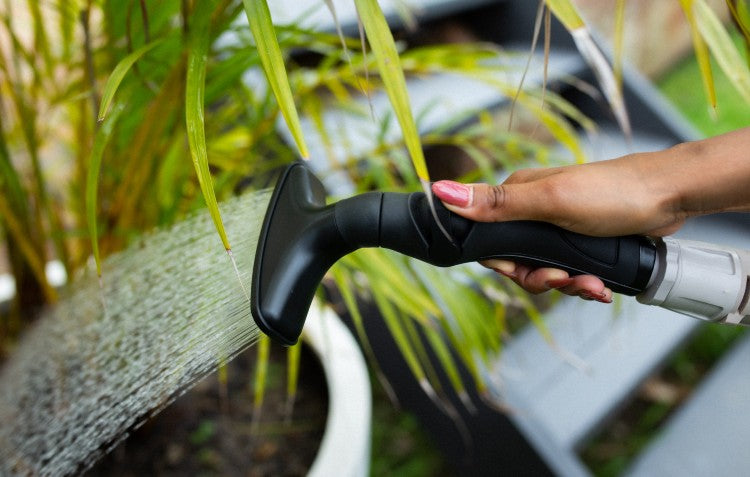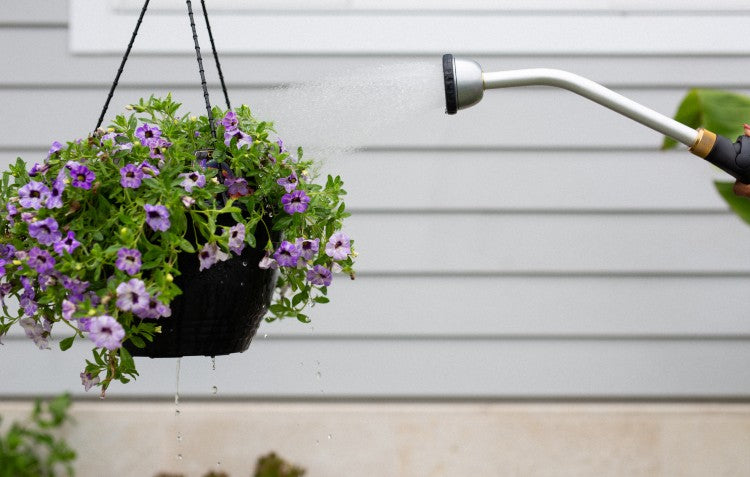Any green thumb will tell you that the secret to a flourishing garden comes down to three key components: what you feed it, how often you water it, and the measures you take to protect it. What’s interesting with watering is that, although it would seem to be the most straightforward task of the three, so much can depend on the quality of your hose.
A high-quality hose is essential for any serious gardener. Our garden hoses provide life-enriching water to our flora; however, that flora can vary from grasses to shrubs, veggie patches, plants, bushes and even trees, which each have different water requirements. Understanding the flow rate of your garden hose allows you to apply the correct amount of water to your plants, meaning efficient watering on your end, and healthy living on theirs.
You are watching: Cart Preview
However, low water pressure within your hose can be an annoying problem as it requires you to undertake a little bit of investigative work to uncover the root cause. While it may be something simple that requires little to no extra cost, others may find they need specialized equipment to rectify it.
What exactly is a garden hose flow rate?
To put it simply, a garden hose flow rate measures the amount of water that passes through your hose per minute. Typically, the rate is measured in gallons per minute (GPM), or litres if using the metric system.
What factors impact my garden hose flow rate?
Three aspects can determine the strength of your garden hose flow rate: the length of your garden hose, the diameter of your garden hose and the water pressure that runs through it.
Hose diameter
A standard garden hose in the US is available in three sizes: ½”, 5/8”, and ¾”, which is the measurement of the garden hose’s internal diameter. With a smaller diameter, less water can pass through your hose and out of the nozzle.
Hose length
Garden hoses can range from anywhere between 25ft to 100ft in length. However, as the hose becomes longer, despite its suitability for a larger garden, the flow rate naturally decreases as water must travel further to pass through it.
Hose water pressure
Your garden hose’s water pressure refers to the speed at which water passes through it and is measured through a PSI rating (pounds per square inch). The average home water faucet can produce a PSI that varies between 35-65 PSI; however, this range can be starkly different to your neighborhood’s main water supply, which can often mean homeowners must seek out pressure regulators to control their PSI. This makes it critical to understand what the PSI of your water connection is before working out the flow rate of your garden hose.

How to work out your water flow rate
Due to the factors mentioned above, it can often be tricky to determine the flow rate from your garden hose with complete accuracy. To find out your rate, we recommend one of two methods:
– Using a bucket/container and stopwatch Turn your faucet on and place the hose end in the bucket. Using the stopwatch, you can keep track of how long it takes to fill up the bucket/container. If you know how much water it can hold, then divide that number by the length of time (seconds or minutes) that it took to fill up.
– Using an online flow rate calculator We recommend this method as it takes out the manual effort and gives you an instant answer. Providing you know each of the elements mentioned above (hose size, length and water pressure), you can enter these numbers into their respective fields, and the online calculator will do the rest, giving you an accurate flow rate for your hose.
Below, we’ve visualized the process and offered some calculations based on typical garden hose lengths, diameters and PSI specifications:
Hose Length (Feet)
Read more : How to Get Rid of Ants in the Garden Soil: 7 Effective Ways
Hose Diameter (Inches)
Water Pressure (PSI)
Flow Rate (GPM)
50”
1/2”
45
13
50”
5/8”
45
24
50”
3/4”
45
38
75”
1/2”
45
9.8
75”
5/8”
45
18
75”
3/4”
45
28.5
Using a PSI rating of 45 (the median in most American homes), we can observe that longer hose lengths and smaller diameters negatively impact the flow rate of a garden hose. What’s important to remember is that different gardens have different watering needs and, considering the price, compromising the length or diameter of your hose for the highest flow rate may not yield the best watering experience in the long run.

How can I improve my garden hose’s flow rate?
While the length of your hose and its internal diameter is dependent on the type of hose you buy, what you can control is your water pressure.
– Look out for leaks Cracked or damaged pipes will allow water to trickle out over time. To work out if you have a leak, turn all faucets and your home’s water valve off before recording the number that appears on your water meter. Leave it for a few hours before returning, and if the reading has increased, you may have a leak.
– Ensure all valves are completely open As unassuming as it may seem, many are quick to question their water pressure without giving the all-clear to their valves. Ensure you check all faucets and areas where valves may be connected to see if they are fully open; they may sometimes be turned during maintenance work or knocked without your knowledge.
– Check your hose for clogs and kinks Clogged areas in hoses can be a hidden contributor to low water pressure. Hose piping may develop residue on its interior over time that can restrict water flow, but if you carry out regular maintenance, this shouldn’t be an issue. It’s also worth making sure your hose isn’t kinked or blocked at any point along its length. Remember that to achieve an efficient flow rate for your garden hose; you must also take into consideration the size of the garden, the variety of plants you grow, and how often those plants need to be watered.
– Lighten the load with a rainwater gathering system If the issue is coming from within the home and the frequency of gardening tasks requiring water can’t be compromised, you could consider this option. By installing this either on the roof or the side of your house, you can collect the rain and use it for either your own consumption or for watering purposes. These collection systems reduce the amount of water relied on by your pipes and various outlets, effectively decreasing their workload while increasing your water supply. Ensure you contact a plumber before installing, unless you have previous experience.

Can I expect a strong flow rate from my Hoselink Retractable Reel?
With both our 50ft and 82ft Retractable Garden Hose Reels, the internal hose diameter is 5/8” with a maximum water pressure of 150psi, meaning you’ll have the right tool in hand for strong water flow and sufficient watering. Ensure that if you do purchase one of our reels, you opt with the choice that’s the right size for your yard. Follow the tips above, and you’ll be on your way to a flourishing, vibrant and well-nourished garden.
Source: https://gardencourte.com
Categories: Garden news

